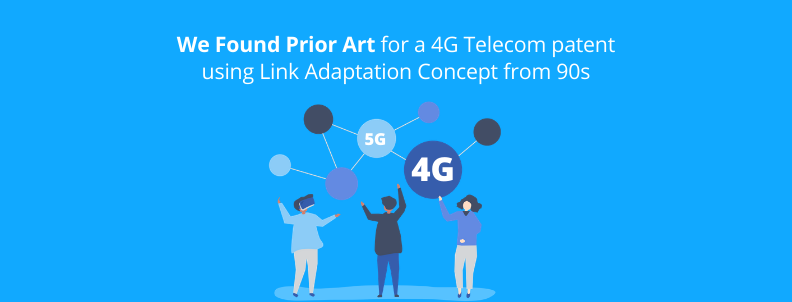“I don’t know what else I can tell you, it seems nothing good exists,” said the attorney on a conference call.
This conversation took place during one of the interim connects in the project lifecycle (mostly around 40% or 80% completion point).
The patent we were tasked to invalidate was around communication technology, relevant to 4G tech. The difficulty we were encountering was majorly due to the early filing date of the patent. The priority date of this patent was in the early 2000s.
An early priority date is one cue on the difficulty of the search.
We all know telecommunication technology is one of the most litigious industries. Millions of dollars are involved in mobile technology litigation.
The stakes are high. While training new search team members, I often explain them with this example.
Mobile phones from different manufacturers equipped with technology such as 4G will increase competition and cut down the cost to consumers. More people will be able to afford mobile phones. This increases competition. The 4G patent pool will help make technology accessible to manufacturers and eventually consumers will benefit. Without a doubt, the primary result of a 4G patent pool will be significant to the economics of the affordability of 4G equipped mobile phones.
It is important to explain the business background to prepare the mind before the search starts.
If I prepare my team that every search is the same, we will never be able to find groundbreaking prior art. Setting up a belief in a searcher’s mind is key to finding prior art.
In this project, all standard search efforts plateaued.
The good thing for us was the attorney (our client) was quite hands-on to the search process. We love working with attorneys who get involved in the search process.
In my years of work, I have seen how Patent attorneys hate the abuse (by the search firm) of their hands-on participation in an exercise where the search firm collects a lot of data and without intelligent analysis, they dump the data to the attorney. This may be advice for our competitors, but if you are a research firm and you are doing this, it is a bad practice. Here at GreyB, we take special care to avoid this form of data dumping and only share results that progress the search forward and is super relevant to the project.
Moving on, let me tell you how we were able to solve this case.
When prior art search gets tough, you may end up spending weeks after weeks, pursuing lead after lead, and still, nothing turns up. It is in those moments that you are faced with a choice like “should I give up or should I keep going”.
Whenever I enter this dilemma, I try to find an answer by sticking to basics – Why was this particular patent conceived?
This patent on 4G mobile space described a special way of encoding the signal strength data. This type of encoding used fewer bits, hence saved bandwidth (the advantage of the patent).
Going to basics can always help you look at the challenge from a different level.
- Were people describing the onset of this technology using the terminology of today?
- Can a concept of communication technology (as claimed in our subject patent), part of the 4G standard, be described in some other manner before the 4G standard was developed?
This was when we had our Eureka! moment.
We found a very popular term that researchers used in the ‘90s to refer to this concept: link adaptation. This was the key. Using this term, we found a lot of documents on the topic and then started studying them.
While WiFi, WiMax, HiperLAN, GSM, EVDO, and ITU standards didn’t give us much material, the EDGE standard (aka 2.5G) sparked our interest. One draft in the EDGE standard described the same encoding that we were looking for – the link adaption type of encoding used fewer bits, hence saved bandwidth.
This standard used obscure terms like RXLEV, I_LEVEL, C_VALUE to describe this encoding which made it super hard to discover in the standard process of searching. But with grit and intelligence, we were able to figure this relevant art and kill the patent in question.
Conclusion
While I have worked on a lot of cases, I will always remember this particular case of invalidation search for three major reasons:
- I was able to set up the searchers’ mindset by understanding the business impact of litigation (The motivation part);
- I was able to apply the evolution of technology to find where to search (search strategy based on basics);
- I was able to thoroughly search for telecom standards. Just because we created our database of telecom standards with advanced search capabilities (our proprietary database)
Like our thought process and think we can help you find just the right prior art? Because we really can(Above case in point). To get started, send us your requirements and we will get back to you in no time.











